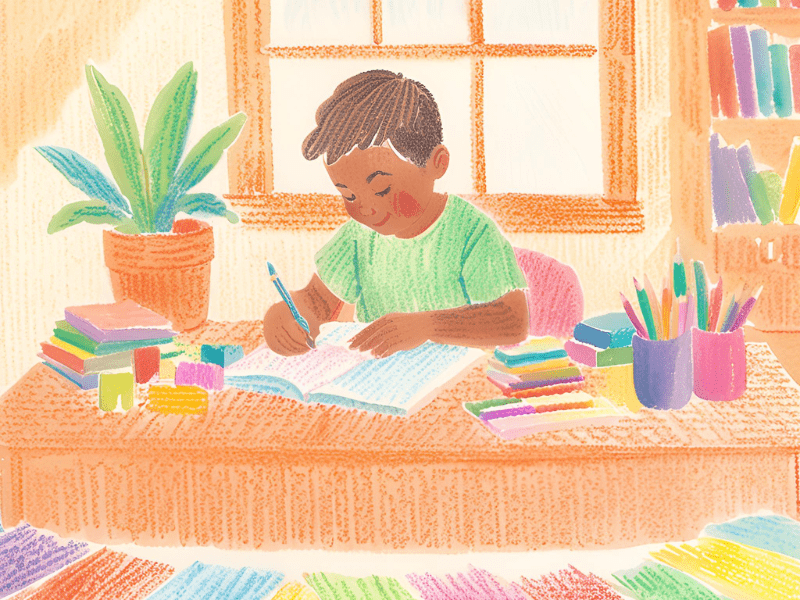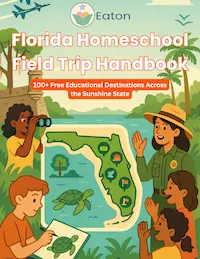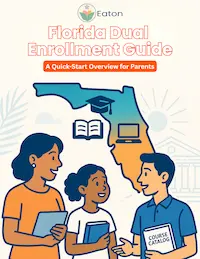Eclectic Homeschooling: Combining the Best of All Worlds
Homeschooling today is more exciting—and flexible—than ever. If you’ve spent any time searching for homeschooling methods, you’ve probably seen terms like Montessori, classical, Charlotte Mason, and unschooling. But maybe none of those feel quite right on their own. That’s where eclectic homeschooling shines!
Eclectic homeschooling is all about mixing and matching from different styles to build a learning environment tailored specifically to your child. It’s perfect for families who love flexibility and creativity, or who haven’t quite found one style that fits their child perfectly. In this guide, I’ll explain exactly what eclectic homeschooling is, why it works for so many families, and share practical tips for getting started.
So, What Exactly Is Eclectic Homeschooling?
Eclectic homeschooling is all about freedom and flexibility. Unlike traditional homeschooling, where you stick closely to one philosophy or curriculum, an eclectic approach lets you pick the best parts from different methods. Love Charlotte Mason’s emphasis on literature but prefer Montessori’s hands-on math approach? No problem! With eclectic homeschooling, you can combine those strengths into a plan that suits your child’s unique needs.
This approach really puts your child first. If something isn’t working, you have the freedom to change things up quickly. You’re never stuck using materials that your child doesn’t enjoy or learn from effectively.
Here’s what parents love most:
- Endless choices and resources.
- Customizing lessons to your child’s learning style.
- Quickly changing things if they aren’t working.
If you’re curious about homeschool regulations—especially here in Florida—check out our handy resource: Homeschool Florida: Your Ultimate How-to Guide. Staying informed about local guidelines keeps your homeschool journey stress-free.

Why Eclectic Homeschooling Is Such a Great Fit
Every family has its own rhythm, and eclectic homeschooling respects that. Some families adore the freedom of unschooling but want structure for core subjects like math and reading. Others enjoy hands-on Montessori projects but also crave the rich literature that Charlotte Mason offers. Eclectic homeschooling means you never have to choose just one.
Eclectic homeschooling might be right for you if:
- You believe learning should be exciting, not stressful.
- You have children with different learning styles or interests.
- You want to foster curiosity and creativity alongside academic basics.
Imagine your child suddenly passionate about dinosaurs or outer space—you can dive right into those topics, turning their interests into science lessons, art projects, and even reading assignments. This approach keeps kids motivated and excited about learning.
The Top Benefits of Eclectic Homeschooling
1. Super Flexible and Adaptable
Life happens—and eclectic homeschooling adapts. If your child finds a workbook boring, switch it out. Feeling stuck? Move to something more interactive, like a project or video. It’s all about making learning fit your family, not the other way around.
2. Totally Personalized
Every child learns differently. Eclectic homeschooling lets you mix things up—use videos for your visual learner, experiments for your hands-on kid, or audiobooks for your story-lover. You’re free to choose the resources that engage your child best.
3. Easy on the Budget
Who doesn’t love saving money? With eclectic homeschooling, libraries, free online resources like Khan Academy or PBS LearningMedia, and secondhand bookstores become your best friends. Reusing or borrowing materials keeps costs low and creativity high!
4. Prevents Burnout
Kids (and parents!) can get tired of doing the same thing every day. Eclectic homeschooling prevents burnout by offering variety. Switch easily from structured lessons to project-based learning to keep everyone engaged.
5. Real-Life Connections
Ever heard, “When will I ever use this in real life?” With eclectic homeschooling, you won’t hear it often. Cooking becomes a math lesson, gardening teaches biology, and local trips bring history alive. Learning feels meaningful and practical.

Common Challenges (and How to Solve Them)
1. Feeling Overwhelmed
Too many choices can feel daunting. Combat this by setting clear goals early. Pick a structured curriculum for core subjects and stay flexible with others. Planning tools like digital calendars or checklists help you stay organized without sacrificing freedom.
2. Worrying About Gaps
Without a set curriculum, parents might fear missing important topics. Stay confident by periodically checking state guidelines or standardized tests to track progress. Trust yourself—you know your child best!
3. Time and Organization
Keeping track of various resources might feel tricky. Color-coded binders, subject-specific days, or homeschool co-ops can streamline your planning. Plus, co-ops offer great social opportunities for your kids.
4. Doubting Yourself
Self-doubt is natural but remember: no homeschooling approach is perfect. Keep track of your child’s growth with regular check-ins or portfolios. Seeing progress builds confidence and helps you trust your instincts.
How to Get Started
- Explore and Reflect Dive into different homeschooling methods—classical, Montessori, unschooling—and note what resonates. Watch how your child learns best. Do they enjoy hands-on activities, reading stories, or watching videos?
- Set Up a Loose Framework Outline must-cover subjects like math and reading. Choose where you’ll have structure, and where you’ll leave room for flexibility. This framework guides you without restricting creativity.
- Gather Your Resources Start with trusted sources like Khan Academy for math or library books for language arts. Try out different tools to see what your child enjoys most.
- Make a Plan Set aside time for formal lessons and creative exploration. Maybe mornings are structured, afternoons free-form. Use planners or apps to stay organized.
- Evaluate and Adapt Keep track of what works. If something isn’t clicking, try something new! This ongoing process makes homeschooling exciting and responsive.

Special Tips for Florida Families
Florida homeschooling families have fantastic resources at their fingertips, from local co-ops to scholarships like the Step Up program. Co-ops are particularly valuable—they not only provide educational resources but also build community connections for both children and parents. Explore our detailed guide on How to Get a Step Up Scholarship to learn more about local benefits. For even more support, consider joining groups like Florida Parent-Educators Association (FPEA), which offers helpful events, conventions, and resources specifically for homeschool families in Florida.
Real-Life Eclectic Homeschool Examples
Project-Based Family
One family tackles structured math each morning but leaves afternoons open for exploration—like studying Ancient Egypt through crafts, reading, and documentaries. It’s a perfect blend of structured and creative learning. They often include local museum trips, hands-on archaeological digs in their backyard, and cooking Egyptian recipes to bring history to life.
Themed Unit Study Family
Another family picks a monthly theme, like oceans or space, integrating all subjects around that topic. They solve space-themed math problems, write astronaut biographies, create galaxy art projects, and even organize family stargazing nights. These thematic units make learning cohesive, exciting, and memorable.
Nature-Immersed Family
A third family thrives by combining outdoor adventures with structured learning. They frequently take hikes for biology lessons, do nature journaling for language arts, and integrate geology into their science curriculum through rock collection and identification. Their approach fosters curiosity, environmental awareness, and active learning.
Supporting Social and Emotional Growth
Eclectic homeschooling places a strong emphasis on social and emotional development, recognizing the importance of nurturing the whole child. Joining homeschool co-ops, arranging regular playdates, and participating in extracurricular activities or clubs helps build essential social skills and lasting friendships. Consider online clubs like Outschool, or local community programs such as scouting, sports teams, or art classes. Encouraging your child to journal or blog about their experiences can also foster emotional growth, self-awareness, and valuable reflection skills. For additional resources, visit Child Mind Institute, which offers expert advice and practical strategies for supporting your child’s emotional wellbeing.
Ready for the Next Step?
Eclectic homeschooling transforms learning into an amazing journey. If you’d like extra support, consider exploring our K-8 online courses, specially designed to blend seamlessly with eclectic homeschooling.
Final Thoughts
Eclectic homeschooling puts you—and your child—in control. Embrace the flexibility, adapt to your child’s needs, and enjoy the wonderful, personalized adventure of homeschooling.



